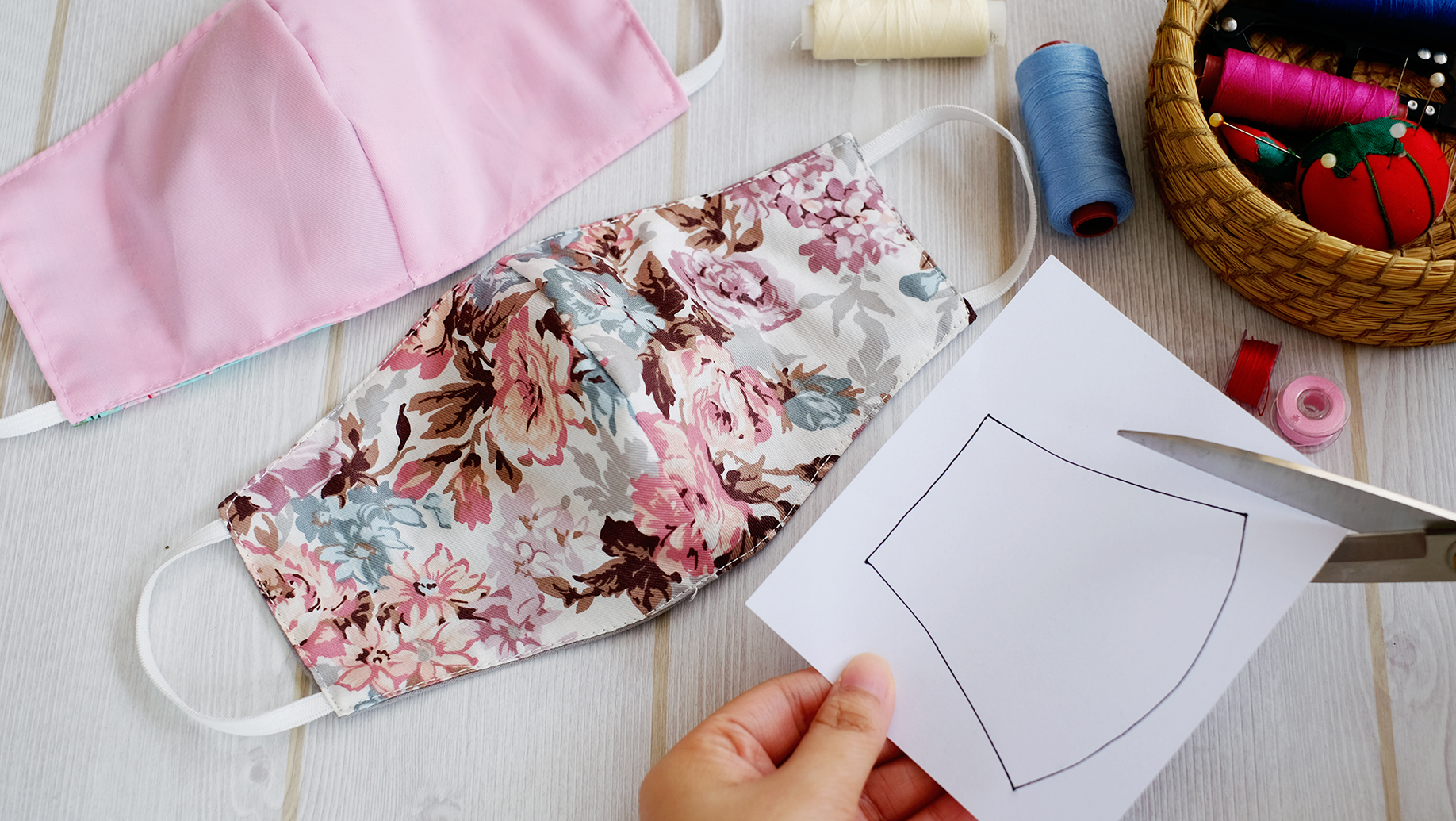
Me-Made Masks: Tips, Tricks and Patterns to Make Your Own
So it’s looking like masks are set to remain as a handbag staple, living happily next to half a chocolate bar and that old lip balm from who-knows-when. We’ve been fairly lucky here in Australia, but whether you’re still in lockdown or looking to travel, masks are still a necessity in many places as a simple thing we can do to help protect each other. If you’re anything like us though, the current consumption rate of single-use masks may be making you feel a little conflicted. On one hand, masks are vital in our fight against COVID-19 as they create a physical barrier when physical distancing isn’t an option. However, on the other hand, disposable masks are single-use, have a short life cycle and cannot be recycled. (Here’s a tip from the RSPCA – snip the straps after use to help protect our wildlife).
There are definitely some situations where disposable masks are a necessity, but if a reusable fabric version is sufficient for your needs, then why not sew your own? Fortunately, whipping up your own reusable mask is relatively simple and there is no need to buy fancy fabrics – you may even already have the materials lying around at home. While wearing masks may not be super fun, stitching up something to match your outfits is one way to jazz up your duty!
Here’s a few tips, tricks and patterns to get you started. Stay safe and happy sewing!
FREE PATTERNS
Where to start?! There are tons of patterns floating around the sewing community – here’s a little round-up of some of the best and easiest to sew that we’ve spotted.
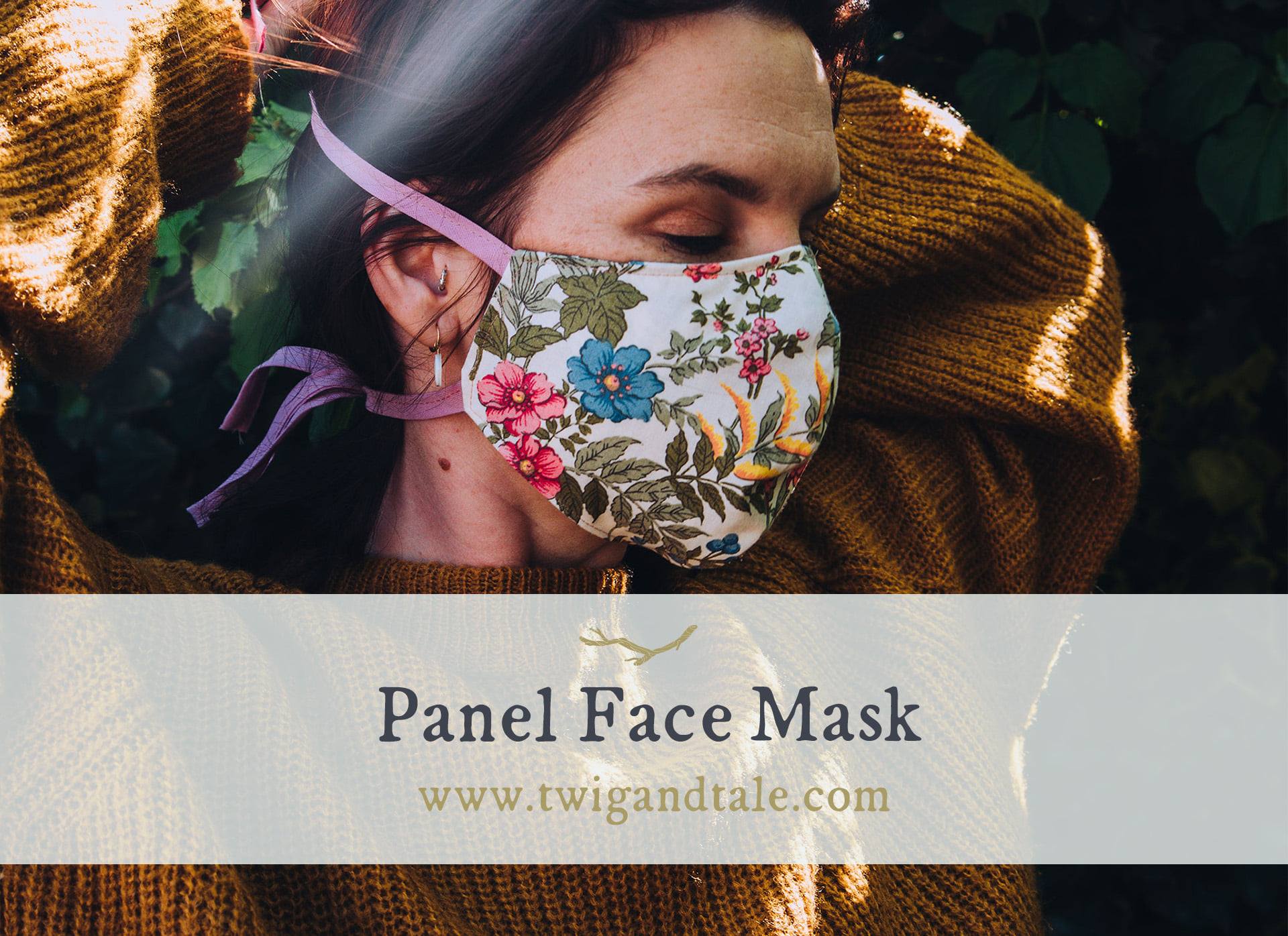
This pattern offers two different styles – the pleated and panel style masks. There are multiple sizes (including children’s) so you can achieve the best fit, along with options for adding a pocket filter and removable nose bridge.
Birch Creative provides a clean, moulded face mask pattern with three sizes (including one for children). The instructions teach you another method for inserting the elastic (wrapped behind the head) which may be more comfortable for some.
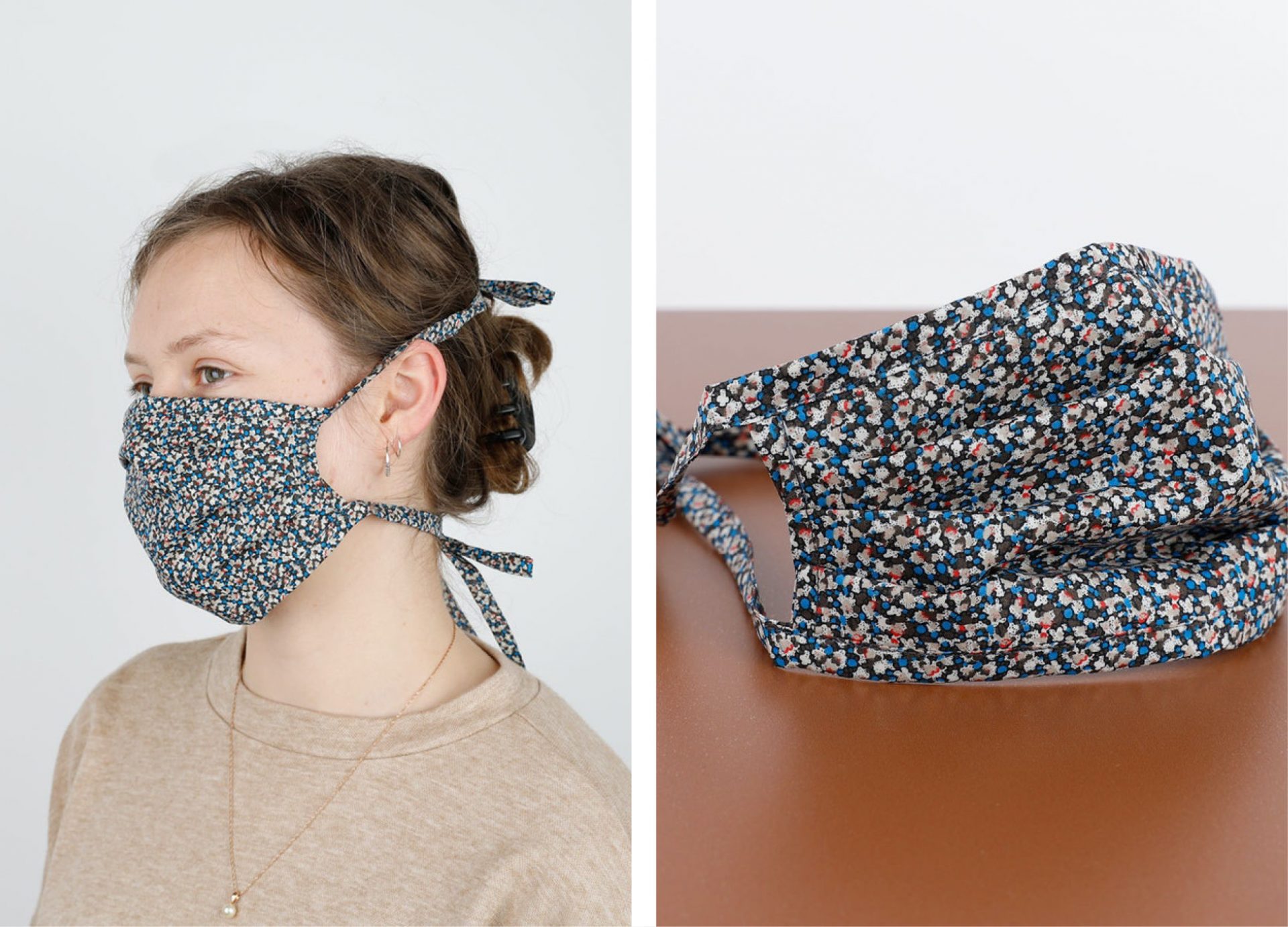
The sewing experts over at The Fabric Store tested out four easy-to-sew-yourself patterns, including one from Geneva Vanderzeil of Collective Gen. They (naturally) used their own range of densely woven cotton, linen, and cotton blend fabrics, bias binding and filters.
After trying many different mask patterns and not being happy with the fit, Gwen set to work creating her own hybrid 3D/moulded version. Her aim? Maximum comfort during wear, most ease of sewing and minimum fabric waste. She provides a downloadable pattern and step-by-step photo tutorial. This pattern produces one size but she shows you how to enlarge it with the ‘slash and spread’ method.
Craft Passion offers a face mask pattern with four sizes, from age three and above. This mask includes an option for a removable filter and removable nose wire. Don’t have a printer? They have you covered (sorry), with an option of tracing the pattern straight from your monitor.
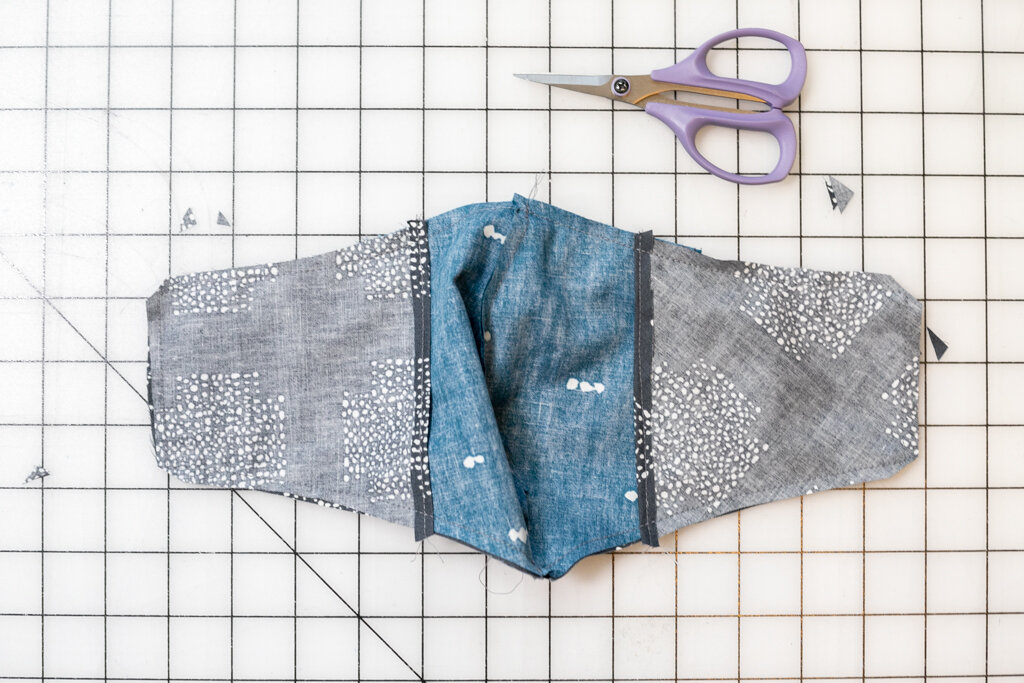
SewCanShe (tutorial for the Olson pattern)
Caroline from SewCanShe uses the Olson pattern by UnityPoint Health and delivers an easy to follow photo tutorial and video on making your own. The pattern from Unity Point was developed by medical professionals in Iowa, Illinois and Wisconsin, to be used as a last resort when surgical and N95 masks became unavailable. It includes a pattern for adults and children with a pocket for a filter.
Spotlight has a number of patterns accompanied by written instructions and video tutorials for each one. They include the pleated style, the clean moulded look and even teach you how to customise your own – with tie dye and embellishments!
All sewed out?
While it may not pass the recommendations, this no-sew tutorial from Headspace uses a bandana and hair-ties as a quick fix for when you have no other options. And if you want to just buy a pre-made mask, then we listed a few brands here, Yarli Creative make some with original Indigenous artwork or this list of local companies from Ethical Clothing Australia might hit the spot.
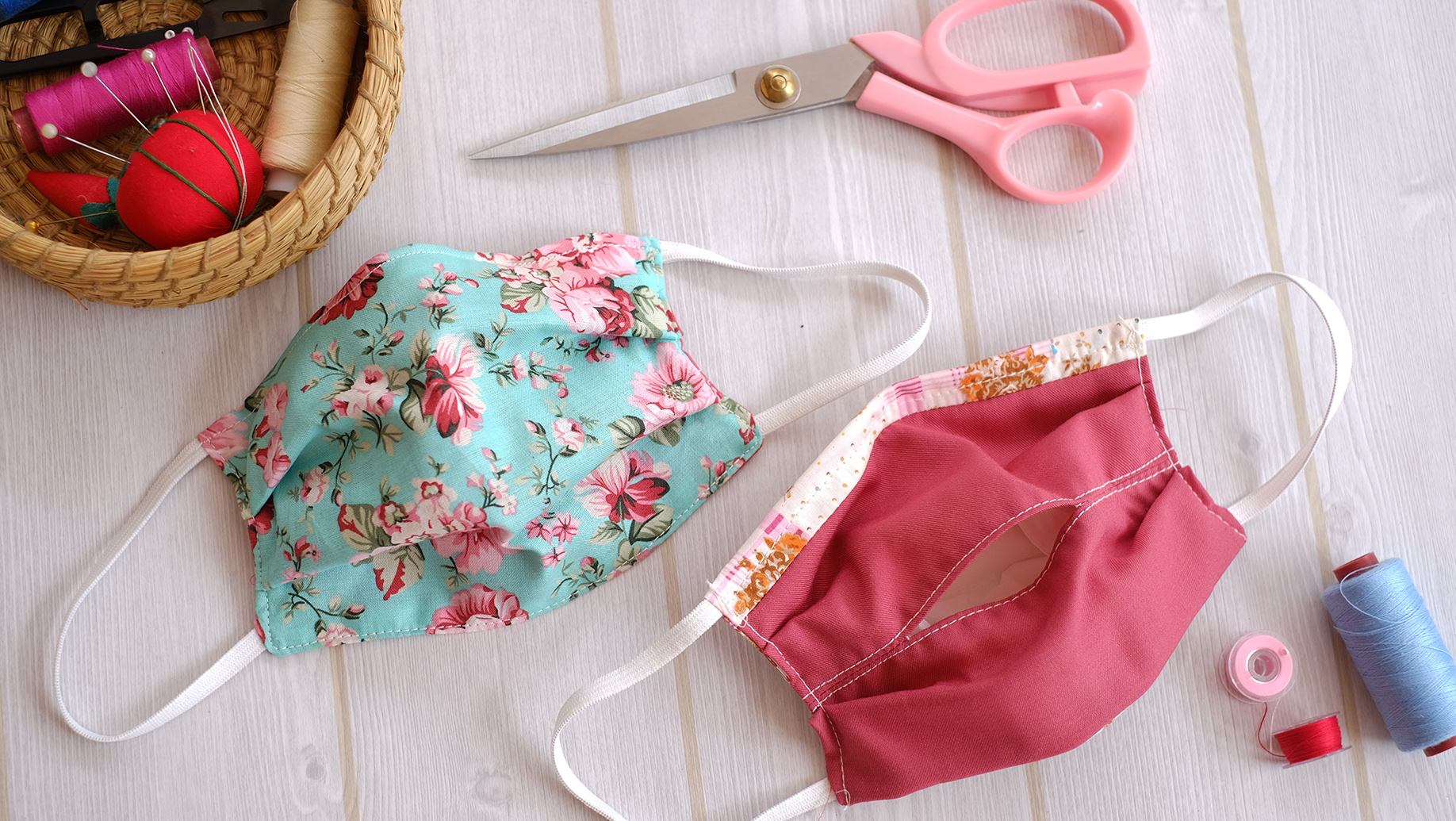
TIPS FOR SEWING YOUR OWN MASK
Fabric choice
Most of the recommendations state that you need three layers, but please check your region’s guidelines, as they can differ in different parts of the world.
LAYER 1: This is an inner layer that will be closest to the face. You want this to be water absorbing and soft and gentle on the skin, so a natural fibre such as cotton is perfect – think old T-shirts, PJs.
LAYER 2: This layer is the middle layer and is going to act as a ‘filter’. We want this to be a synthetic fibre, such as cotton/polyester – think pillow protectors, reusable ‘green’ grocery bags, lightweight fused interfacing, enviro cloths.
LAYER 3: This is the external outer layer. We want this to be water resistant and moisture wicking. Fabrics such as polyester and nylon work best – think old sports clothes or activewear.
A few local guidelines: Aust Government Department of Health, NSW Government and Victorian Government.
Ear loop alternatives
Thinner elastics work best for all day comfort. If you can’t get your hands on some, try using rubber bands, hair ties, shirring elastic or cutting up an old T-shirt into strips and creating T-shirt yarn. Or alternatively use woven fabric to make fabric ties.
Nose wire alternatives
Nose wires can help achieve a better fit and also help prevent foggy glasses. You can re-use wire from surgical masks, twist ties, pipe cleaners, hardware wire or florist wire.
Am I wearing my cloth face mask correctly?
You want your cloth face mask to fit snugly around your face, with a focus on covering the nose and mouth. The elastic should be pulled back, behind the ears, or tied at the back of the head to allow a snug fit. If you find elastic ear loops behind the ears uncomfortable (face masks aren’t that fun to wear!), you can ease pressure by joining the elastic loops at the back of your head with a ribbon, attach it to a headband, use hair clips or check out these hacks for people with short hair.
A few notes when using fabric masks
Please remember that masks sewn by yourself should be for personal use only and are not considered medical grade. Some other points to consider:
- They are reusable but it’s best practice to change masks as soon as they are damp.
- Wash with soap and hot water between uses and store in a zip lock bag when you’re not using it.
- Practice hand hygiene when removing and storing masks, handling them by their elastic loops.
- Masks should not be shared with others.
- Inspect masks for tears or holes regularly and do not wear a damaged mask.
Otherwise, have a little fun and make the best of a bad situation. Sewing your own mask means endless opportunities for using leftover scraps to match your outfit (double points if you can convince your partner to match you too)!

